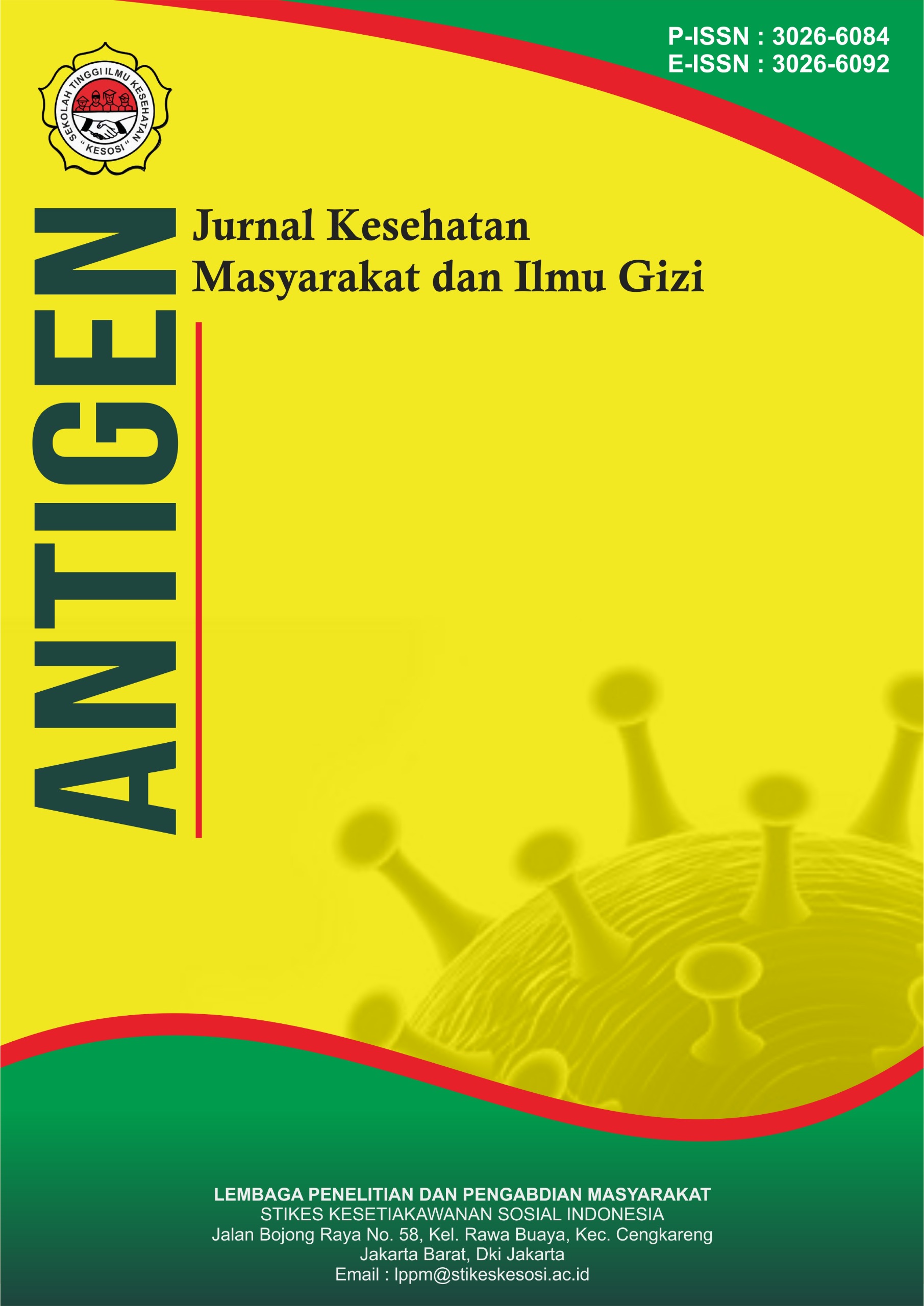Tinjauan Sistematis Pemanfaatan Tanaman Pisang (Musa Paradisiaca L.) Wilayah Indonesia Sebagai Bahan Sediaan Kosmetik
DOI:
https://doi.org/10.57213/antigen.v2i3.334Keywords:
Cosmetics, Banana Plants, and Natural Preparations from NatureAbstract
Objective: To review the literature on the use of banana plants (Musa paradisiaca L.) in Indonesia. Method: A systematic search was carried out to identify relevant articles in 3 bases, namely (Google Scholars, research.gate, and Pubmed). Both include the product produced, how it is made, the contents of the banana plant samples and the evaluation of the product so that it can be accepted by society. Data analysis is based on a checklist prism with specified criteria Results: Five journals were selected because they included the desired review journal criteria. All types of products play an important role with different types of preparations and also different properties and ingredients. Conclusion: There are not many articles that discuss cosmetic products from banana plants, therefore this article was chosen to find out the contents of the banana plant samples. Most are from the skin of the banana, but some are also from the stem of the banana. Apart from that, one article discusses various benefits or parts of the banana plant which can be used as a basic ingredient for cosmetics. The content of secondary metabolites in banana plants, such as the main flavonoids, functions as an antioxidant which is much sought after in natural cosmetic products from this banana plant. Extraction was carried out for all preparations using the maceration method with ethanol solvent. And evaluation tests show that all articles conclude that all parts of the plant are capable of meeting standards to be formulated into cosmetic preparations.
References
Antara, I Putu Satria. Megawati, Fitria. Dewi, Ni Luh Kade Arman Anita. (2022). ARTIKEL REVIEW: TREND PEMILIHAN SEDIAAN KOSMETIK HERBAL PADA KULIT WAJAH. Jurnal Usadha.
Ariani, L. W., & Suharsanti, R. (2018). Pelembab Alami Sediaan Shooting Gel Kombinasi Lidah Buaya Dan Buah Rambutan, Halaman 50.
Ayuhastuti, A. 2016. Pratikum Teknologi Sediaan Steril. Cetakan Pertama. Jakarta: Kementrian Kesehatan RI. Hal 281
Chan, Adek & Afriadi, & Winata, Hanafis & Suprianto, Suprianto & Sahrita,. (2021). Formulasi Sheet Mask Ekstrak Etanol Kulit Pisang Ambon (Musa paradisiaca L.) sebagai Moisturizing. Jurnal Ilmiah Manuntung. 7. 73-78. 10.51352/jim.v7i1.424.
Darmawan, A. B. 2013. Anti-Aging Rahasia Tampil Muda di Segala Usia. Yogyakarta: Media Pressindo. Hal. 18, 13
Depkes RI. 1979. Farmakope Indonesia. Edisi III. Jakarta: Direktorat Jendral Pengawasan Obat dan Makanan. Hal. 3
Depkes RI. 1980. Materia Medika Indonesia, Jilid IV. Dirjen POM RI, Ja
Depkes RI. 1985. Formularium Kosmetika Indonesia. Jakarata: Departemen Kesehatan RI. Hal. 22,356.
Depkes RI. 1993. Kodeks Kosmetika. Edisi II. Jakarta: Direktorat Jendral Pengawasan Obat dan MakanaHamidah, N., Priatni, H. L. 2019. Pengaruh Pati Jagung (Amylum maydis) Terhadap Kualitas Bedak Tabur yang Mengandung Ekstrak Daun Teh Hijau (Camellia sinensis L.) Sebagai Anti jerawat. Jurnal Farmasi Muhammadiyah Kuningan, 4(2): 1-
Ekayanti, Ni & Megawati, Fitria & Dewi, Ni. (2023). PEMANFAATAN TANAMAN PISANG (Musa Paradisiaca L.) SEBAGAI SEDIAAN KOSMETIK: ARTIKEL REVIEW: PEMANFAATAN TANAMAN PISANG (Musa Paradisiaca L.) SEBAGAI SEDIAAN KOSMETIK. Usadha. 2. 19-24. 10.36733/usadha.v2i2.6217.
Firdausi, Z., & Dwiyanti, S. (2018). Perbandingan Proporsi Lidah Buaya Dan Bunga Mawar Terhadap Hasil Jadi Masker Kertas (Sheet Mask). 07, 95– 101.
Indrawati, Teti. (2011). FORMULASI SEDIAAN KOSMETIK SETENGAH PADAT. ISTN. Jakarta
Martin, A., Swarbick, J., dan A. Cammarata. 1993. Farmasi Fisik 2. Edisi III. Jakarta: UI Press. Pp. 940-1010, 1162, 1163, 1170.
Martina R. Kulit Pisang Ambon Sebagai Masker Tradisional Untuk Perawatan Kulit Wajah Kering. J Kapita Sel Geogr 2019;2:20–30
Masaki, H. 2010. Role of antioxidants in the skin: anti-aging effects. Journal of Dermatological science. Hal. 58, 85, 90
Megawati, Fitria & Dewi, Ni & Agustini, Ni & Antara, I & Ekayanti, Ni & Darmayanti, Ni. (2024). Ethnobotanical Study and Hedonic Evaluation with Cost Analysis of Banana (Musa paradisiaca L.) Stem Serum Preparation as an Anti-Aging Solution. Borneo Journal of Pharmacy. 7. 206-214. 10.33084/bjop.v7i2.6872.
P. Yulianis Ali, ‘Formulasi Bedak Tabur Ekstrak Etanol Kulit Buah Pisang Raja (Musa X Paradisiaca L.) Sebagai Anti Aging’, Phd Thesis, Upertis, 2020. Available: Http://Repo.Upertis.Ac.Id/1452/
Pratiwi FA, Amal S, Susilowati F. Variasi Jenis Humektan Pada Formulasi Sediaan Masker Gel Peel Off Ekstrak Kulit Buah Pisang Kepok (Musa paradisiaca pericarpium). Pharm J Islam Pharm 2018;2:31. https://doi.org/10.21111/pharmasipha.v2i 2.2778.
Syamsuni, H. 2006. Farmasetika dasar dan Hitungan Farmasi. (S. R. Winny, Ed.). Jakarta: Buku Kedokteran EGC
Tisya, Valsa. (2022). PEMBERDAYAAN MASYARAKAT “3 IN 1”: EDUKASI PEMANFAATAN LIMBAH KULIT PISANG MENJADI MASKER WAJAH ORGANIK. Jurnal PkM Pemberdayaan Masyarakat. 3. 1-14. 10.56327/jurnalpkm.v3i1.36.
Tranggono, R. I., & Latifah, F. (2007). Buku pegangan ilmu pengetahuan kosmetik. PT. Gramedia Pustaka Utama.
Wardi, E. S., & Fendri, S.T.J. 2018. Pembuatan Nata dari Kulit Pisang Raja (Musa paradisiaca L.). Chempublish journal, 3(1), 44-49.
Downloads
Published
Issue
Section
License
Copyright (c) 2024 Antigen : Jurnal Kesehatan Masyarakat dan Ilmu Gizi

This work is licensed under a Creative Commons Attribution-ShareAlike 4.0 International License.






